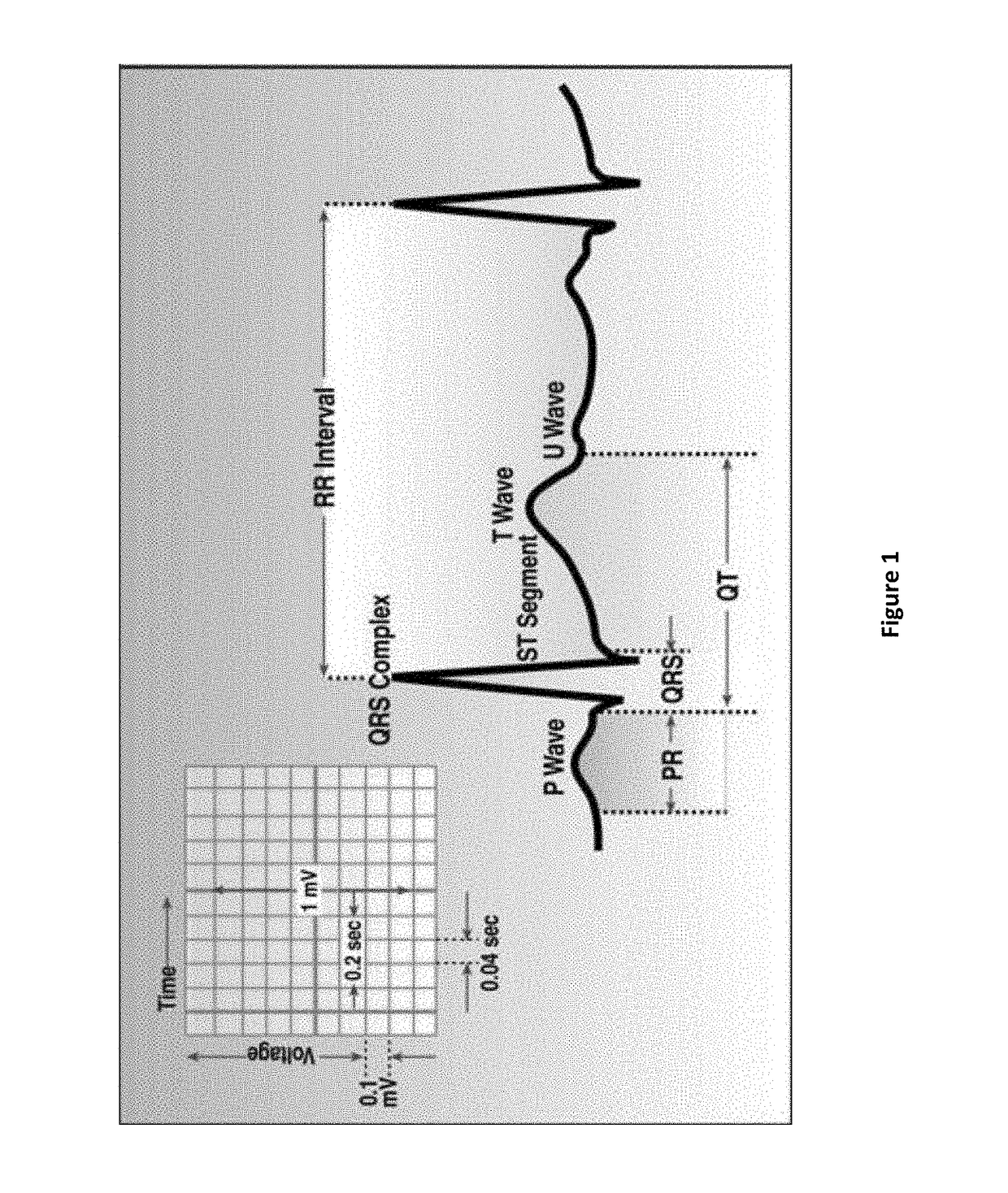Compositions and methods for treating atrial fibrillation
- Summary
- Abstract
- Description
- Claims
- Application Information
AI Technical Summary
Benefits of technology
Problems solved by technology
Method used
Image
Examples
example 1
del for Atrial Fibrillation (AF)
[0611]Domestic goats weighing between 49 and 75 kg are randomized into 2 groups: a control group (particulate delivery system of the described invention with no amiodarone) and a treatment group (particulate delivery system of the described invention comprising a pharmaceutical composition comprising a particulate formulation containing a therapeutic amount of amiodarone (Sigma-Aldrich, St. Louis, Mo.)).
[0612]Anesthesia is induced by thiopental 20 mg / kg IV, and maintained with 2-3% isoflurane in a 1:1 mixture of oxygen and air. Buprenorphine (10 μg / kg IV) is used for analgesia. Throughout the procedure, limb-lead ECG, arterial blood pressure, endexpiratory CO2 and oxygen saturation (pulse oximeter) are monitored. A rectal temperature of 38 to 39° C. is maintained by an external heating pad. Fluid loss is compensated with saline (0.9%) at 5 to 8 mL / kg / h via a peripheral venous catheter. After a right intercostal thoracotomy, the pericardium above the r...
example 2
tive Atrial Fibrillation (AF)
[0616]Patients undergoing cardiac surgery (e.g., coronary artery bypass graft surgery (CABG)) are randomized into 2 groups: a control group (particulate delivery system of the described invention with no amiodarone) and a treatment group (particulate delivery system of the described invention comprising a pharmaceutical composition comprising a particulate formulation containing a therapeutic amount of amiodarone (Sigma-Aldrich, St. Louis, Mo.)). Prior to closure of the sternum, the particulate delivery system of the described invention with no amiodarone is applied to the right atrial lateral wall, left atrial appendage and transverse sinus area of control group patients; and the particulate delivery system of the described invention comprising a pharmaceutical composition comprising a particulate formulation containing a therapeutic amount of amiodarone is applied to the right atrial lateral wall, left atrial appendage and transverse sinus area of trea...
PUM
| Property | Measurement | Unit |
|---|---|---|
| Time | aaaaa | aaaaa |
| Time | aaaaa | aaaaa |
| Time | aaaaa | aaaaa |
Abstract
Description
Claims
Application Information
 Login to View More
Login to View More - R&D
- Intellectual Property
- Life Sciences
- Materials
- Tech Scout
- Unparalleled Data Quality
- Higher Quality Content
- 60% Fewer Hallucinations
Browse by: Latest US Patents, China's latest patents, Technical Efficacy Thesaurus, Application Domain, Technology Topic, Popular Technical Reports.
© 2025 PatSnap. All rights reserved.Legal|Privacy policy|Modern Slavery Act Transparency Statement|Sitemap|About US| Contact US: help@patsnap.com



